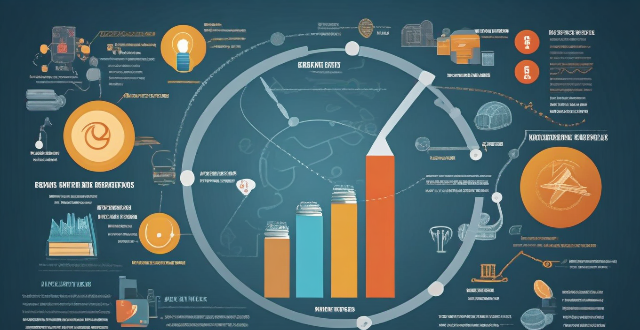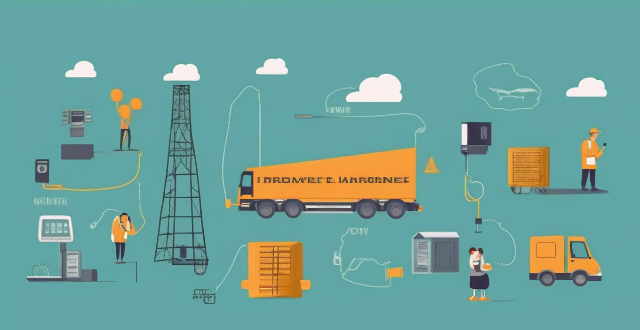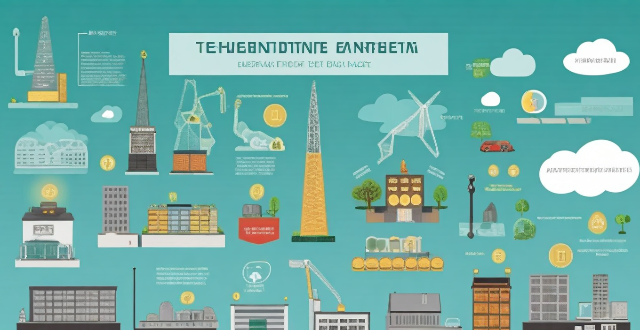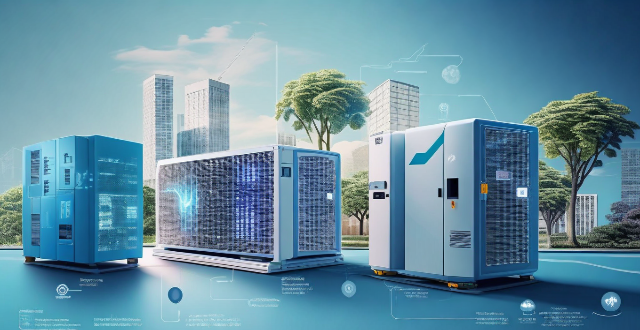Renewable Source

Can hydroelectric power be considered a renewable energy source ?
Hydroelectric power is often considered renewable due to its reliance on the water cycle, but debates exist over its classification. Advantages include being a renewable resource, having low emissions, and providing energy storage. Disadvantages involve ecosystem impacts, community displacement, and siltation/erosion issues. The definition of "renewable" influences whether hydroelectric power is seen as truly renewable, with varying priorities leading to differing conclusions.

What role do renewable energy sources play in combating climate change ?
Renewable energy sources play a crucial role in combating climate change by reducing greenhouse gas emissions, promoting sustainable development, creating job opportunities, and enhancing energy security. Solar, wind, hydropower, and other renewable energy sources are clean and sustainable alternatives to fossil fuels. By investing in these sources, we can slow down the rate of climate change and create a cleaner, more sustainable future for all.

What is wind energy and how effective is it compared to other renewable sources ?
This article provides an overview of wind energy, discussing its definition, effectiveness compared to other renewable sources, cost-effectiveness, environmental impact, scalability, and availability. It highlights the benefits of wind energy as a clean and sustainable source of electricity that can be produced at any scale and in many parts of the world.

What is the current state of fusion power research and its potential as an ultimate renewable energy source ?
Fusion power research aims to harness energy from fusing atomic nuclei, similar to the sun's process. Key developments include the ITER project, breakthroughs in magnetic confinement fusion, and advances in inertial confinement fusion. Challenges include technical hurdles, economic viability, and safety concerns. Fusion power has potential as an ultimate renewable energy source due to its unlimited and clean energy production, minimal environmental impact, and long-term sustainability.

How effective is solar power as an alternative energy source ?
Solar power is a sustainable and environmentally friendly energy source with decreasing costs and increasing efficiency due to technological advancements.

How efficient is wind energy compared to other renewable sources ?
The efficiency of wind energy is influenced by factors such as capacity factor, technological advancements, and site specificity. Compared to other renewable sources like solar, hydropower, geothermal, biomass, and tidal/wave energy, wind energy has a relatively high capacity factor ranging from 35% to 45%. Technological improvements have increased the efficiency of wind turbines over the years, making them more productive. However, the efficiency of wind farms is highly dependent on the location, with optimal sites achieving higher efficiency rates. In conclusion, wind energy compares favorably to other renewable sources in terms of efficiency, but the choice between different renewable energies often depends on local conditions, economic factors, and technological advancements.

What are the benefits of using renewable energy sources for improving energy efficiency ?
Renewable energy sources offer multiple benefits, includingRenewable energy sources offer multiple benefits, including improved air quality, cost savings Renewable energy also provides stable energy prices and reduces dependence on imported fossil fuels, leading to greater energy security. Additionally, the development and deployment of renewable energy technologies create jobs and drive innovation and research in new technologies. Overall, investing in renewable energy is crucial for a sustainable future.

What are the key considerations for integrating renewable energy sources into urban designs ?
Key considerations for integrating renewable energy sources into urban designs include assessing available renewable energy sources, prioritizing energy efficiency, ensuring grid connectivity, involving the community, and considering financial viability.

How can a carbon tax be used to encourage the development of renewable energy sources ?
A carbon tax is a fee on burning carbon-based fuels that aims to reduce emissions by making fossil fuels more expensive, encouraging the use of renewable energy sources. It directly impacts prices, changes consumer behavior, provides economic incentives for renewables, creates market signals for businesses, and supports regulatory frameworks. This leads to increased investment in research and development, subsidies, long-term planning security, innovation, and stricter efficiency standards, all of which contribute to the development of renewable energy sources.

How does energy storage fit into the renewable energy landscape, especially with intermittent sources like solar and wind ?
Renewable energy sources, such as solar and wind power, are becoming increasingly popular as alternatives to traditional fossil fuels. However, these sources are often intermittent, meaning that they do not produce energy consistently throughout the day or year. Energy storage plays a crucial role in addressing this issue by allowing us to store excess energy generated during peak production times for use during periods of low production. There are several types of energy storage technologies available, including batteries, pumped hydro storage, compressed air energy storage (CAES), flywheels, and thermal energy storage (TES). Each has its own advantages and disadvantages, and the choice of technology will depend on factors such as cost, efficiency, and environmental impact. While energy storage offers many benefits, there are also some challenges to consider, such as the cost of installation and maintenance, environmental impacts, and safety concerns. However, there are also many opportunities for innovation and improvement in the field of energy storage. Advances in battery technology could lead to more affordable and efficient ways to store energy, while new types of energy storage systems could offer even greater flexibility and reliability for renewable energy systems. As we continue to shift towards renewable energy sources, it is clear that energy storage will play an increasingly important role in ensuring a stable and reliable power grid.

How does geothermal energy work and is it a viable alternative energy source ?
Geothermal energy is a renewable and sustainable source of energy that harnesses the natural heat from within the Earth's crust. This energy is obtained by drilling wells into the Earth's crust, where the heat is transferred to water or another fluid in a heat exchanger. The heated fluid then spins a turbine to generate electricity. There are three main types of geothermal power plants: dry steam, flash steam, and binary cycle. While geothermal energy has many benefits, including being renewable, cost-effective, and abundant in certain areas, it also comes with high upfront costs and location limitations. Additionally, there are environmental impacts associated with its use, such as potential contributions to earthquakes and impacts on local ecosystems. Despite these challenges, geothermal energy remains a valuable addition to our portfolio of renewable energy sources.

How important is it to have a backup power source in case of emergencies ?
The importance of having a backup power source in case of emergencies is crucial in today's world where we rely heavily on electricity. A backup power source can prevent data loss, maintain essential services, ensure safety, reduce downtime, and improve quality of life during power outages. There are various types of backup power sources available, including UPS, generators, solar power systems, and battery backups. Investing in a backup power source is an investment in peace of mind and preparedness for any emergency situation.

How is renewable energy affecting the traditional energy market ?
Renewable energy sources are having a significant impact on the traditional energy market, affecting pricing, market share, job creation, and environmental concerns. The increased efficiency and reduced installation costs of renewable technologies have made them more competitive with traditional energy sources, leading to declining electricity prices overall. Additionally, the growing demand for renewable energy sources has led to an increase in their market share, particularly for solar and wind power. The transition to renewable energy is also creating new job opportunities across various sectors of the economy, while addressing environmental concerns associated with fossil fuel consumption.

How do climate policies influence renewable energy development and adoption ?
Climate policies play a crucial role in shaping the trajectory of renewable energy development and adoption. These policies are designed to mitigate the effects of climate change by reducing greenhouse gas emissions and promoting the use of clean energy sources. In this article, we will explore the various ways in which climate policies influence renewable energy development and adoption. Governments around the world have implemented a range of incentives and subsidies to encourage the development and adoption of renewable energy sources. These include feed-in tariffs, renewable portfolio standards, tax credits and exemptions, and research and development funding. Carbon pricing mechanisms, such as carbon taxes and cap-and-trade systems, are designed to put a price on carbon emissions. By making fossil fuels more expensive relative to renewable energy sources, these policies create an economic incentive for businesses and consumers to switch to cleaner energy alternatives. Governments also impose regulatory measures to promote renewable energy development and adoption. These include building codes and standards, energy efficiency standards, and renewable energy targets. Public awareness and education campaigns aim to increase public awareness about the benefits of renewable energy and encourage its adoption. These campaigns promote energy conservation, support local renewable energy projects, and raise awareness about the environmental and economic benefits of clean energy sources.

How can Smart Grid Technology help in managing renewable energy sources ?
Smart grid technology is crucial for managing renewable energy sources, enabling their integration into the existing power system and improving efficiency, reliability, and sustainability. It achieves this by optimizing energy consumption, managing demand response, predicting maintenance, self-healing capabilities, integrating energy storage, developing microgrids, real-time monitoring, and data analytics. As renewable energy grows in importance, smart grid technology will become increasingly vital in integrating these sources into our power systems.

What role do renewable energy sources play in climate change adaptation ?
Renewable energy sources play a crucial role in climate change adaptation by reducing greenhouse gas emissions, promoting sustainable development, and enhancing energy security. By transitioning from fossil fuels to renewable energy sources, we can significantly reduce carbon dioxide emissions, which are a major contributor to global warming and climate change. Renewable energy sources are sustainable because they rely on natural processes that replenish themselves over time, unlike non-renewable resources like coal and oil. By using renewable energy sources, we can promote sustainable development that meets the needs of the present without compromising the ability of future generations to meet their own needs. Renewable energy sources provide a diversified energy mix that reduces dependence on imported fossil fuels, enhancing energy security for countries around the world.

What impact does decentralized renewable energy have on the electric grid ?
Decentralized renewable energy sources, such as solarDecentralized renewable energy sources, such as solarbines, have a significant such as solar panels and wind turbines, have a significant impact on the electric grid. They reduce dependence on centralized generation, affect grid stability and reliability, require infrastructure changes, have economic implications, provide environmental benefits, and empower communities. As technology advances and costs decrease, decentralized renewable energy is expected to be increasingly adopted worldwide, offering numerous benefits in terms of sustainability, development, and community control over energy sources.

What role do renewable energies play in the energy transition process ?
The role of renewable energies in the energy transition process is to help decarbonize the power sector, promote sustainability, provide economic benefits, improve energy security, and enhance public health. Renewable sources like solar, wind, hydropower, and geothermal emit little to no greenhouse gases during operation, making them crucial for reducing carbon emissions associated with electricity generation. These sources are also sustainable as they are replenished naturally and do not deplete over time. Investing in renewable energies can lead to job creation, technological innovation, and cost savings in the long run. By diversifying energy sources, countries can reduce their dependence on imported fuels and enhance their energy security. Additionally, renewable energies have lower environmental impacts than fossil fuels, leading to improved air quality and public health benefits.

Can renewable energy sources help in reducing the impact of global warming ?
Renewable energy sources, including solar and wind power, can significantly reduce greenhouse gas emissions and contribute to a sustainable future. These clean energy alternatives offer benefits such as reduced carbon footprint, energy independence, and economic growth. However, challenges like intermittency, storage issues, and high initial costs need to be addressed through grid modernization, advances in storage technology, government incentives, and increased public awareness. By overcoming these obstacles, we can create a more sustainable future for all.

Are there new innovations in battery storage technology that could improve the reliability of renewable energy sources ?
Renewable energy sources are becoming increasingly popular, but their intermittency can cause fluctuations in energy supply. To address this issue, there have been several new innovations in battery storage technology that could improve the reliability of renewable energy sources. Lithium-ion batteries have a high energy density and long lifespan, making them ideal for storing large amounts of energy from renewable sources. Flow batteries store energy in liquid electrolytes that are pumped through a cell stack, allowing for continuous charging and discharging without degradation. Supercapacitors can charge and discharge very quickly, providing bursts of power when needed. Thermal energy storage systems use heat rather than electricity to store energy and can be integrated with various renewable sources. By incorporating these technologies into existing renewable energy systems, we can ensure a more stable and reliable energy supply while reducing our reliance on fossil fuels.

Can carbon sequestration be combined with renewable energy sources for maximum impact ?
This text discusses the potential of integrating carbon sequestration techniques with renewable energy sources to maximize their impact on mitigating climate change. It outlines various methods for carbon sequestration, such as afforestation, BECCS, DAC, and ocean sequestration. The text also describes different types of renewable energy, including solar, wind, hydroelectric, geothermal, and biomass energy. It suggests that combining these strategies can lead to synergistic effects, like integrated systems, improved energy efficiency, EVs powered by clean electricity, smart grids, and supportive public policies. Overall, the text advocates for a comprehensive approach that combines carbon sequestration and renewable energy sources to effectively combat climate change.

Can renewable energy sources effectively replace fossil fuels ?
- Renewable energy sources are sustainable and produce fewer emissions than fossil fuels. - Intermittency, storage, and cost are challenges to the adoption of renewable energy. - Grid integration, energy storage advancements, and government policies can help overcome these challenges.

What are the benefits of using solar power ?
Solar power is a renewable and sustainable energy source that offers numerous benefits. It can be cost-effective in the long run, environmentally friendly, promotes energy independence, has low maintenance costs, versatile applications, creates jobs, provides government incentives, increases property value, and enhances energy security. As technology advances and awareness grows about renewable energy sources like solar power, its adoption is expected to continue rising worldwide.

What role do pumped hydro storage systems play in renewable energy integration ?
Pumped hydro storage systems are crucial for renewable energy integration by offering reliable and efficient energy storage, balancing supply and demand, enhancing grid stability and reliability, facilitating higher penetration of renewables, providing ancillary services, and delivering economic benefits.

What role does renewable energy play in reducing carbon footprint ?
Renewable energy is crucial in reducing carbon footprint as it is obtained from natural resources and does not emit harmful greenhouse gases. It benefits the environment, economy, and society by mitigating climate change, reducing dependence on imported fuels, and providing affordable energy to remote areas. Solar, wind, hydro, geothermal, and biomass energy are types of renewable energy sources. However, challenges such as cost, intermittency, storage, and grid integration need to be addressed. Continued investment and innovation can make renewable energy more accessible and affordable for everyone.

What impact do energy storage solutions have on the economics of renewable energy ?
Energy storage solutions significantly impact renewable energy economics by addressing variability and unpredictability. They enhance grid stability, reduce costs, and increase efficiency, thus making renewable energy more viable. With ongoing technological advancements, energy storage will continue to play a crucial role in integrating renewable energy into power grids and achieving global decarbonization goals.

How can climate finance be leveraged to support renewable energy projects ?
Climate finance plays a crucial role in supporting renewable energy projects. Here are some ways to leverage it: 1. Public-Private Partnerships (PPPs) can be used to attract private investment into renewable energy projects. 2. Green Bonds can be issued to fund environmentally friendly projects such as solar and wind farms. 3. Carbon Pricing Mechanisms can generate revenue that can be invested in renewable energy projects. 4. International Climate Finance Initiatives can provide funding for renewable energy projects in developing countries. 5. Crowdfunding Platforms offer another way to raise funds for renewable energy projects. By using a combination of these strategies, we can accelerate the transition towards a more sustainable future.

What is the role of renewable energy in combating climate change ?
The text discusses the role of renewable energy in combating climate change. It defines renewable energy as derived from natural processes that are constantly replenished, including solar, wind, hydroelectric, geothermal, and biomass energy. The importance of renewable energy is highlighted by its low carbon emissions, sustainability, and economic benefits. Renewable energy combats climate change by reducing greenhouse gas emissions, diversifying the energy mix, promoting energy efficiency, stimulating innovation, and enhancing environmental stewardship. The transition to renewable energy presents economic opportunities and promotes innovation, with a profound impact on slowing climate change.

Can carbon capture technology be used in conjunction with other renewable energy sources ?
Carbon capture technology can be used with renewable energy sources to reduce greenhouse gas emissions and mitigate climate change. There are several ways that this technology can be used, including post-combustion capture, pre-combustion capture, oxy-fuel combustion, and chemical looping combustion. However, there are also challenges and considerations that must be taken into account, such as cost, energy requirements, and storage.

Can a Series Hybrid Electric Vehicle be charged by an external power source ?
Series HEVs can be charged by an external power source, which offers benefits like increased range and reduced emissions. To charge a series HEV using an external power source, you will need a compatible charging station or outlet. Most series HEVs come with a standard charging cord that can be plugged into a household outlet or a dedicated charging station.